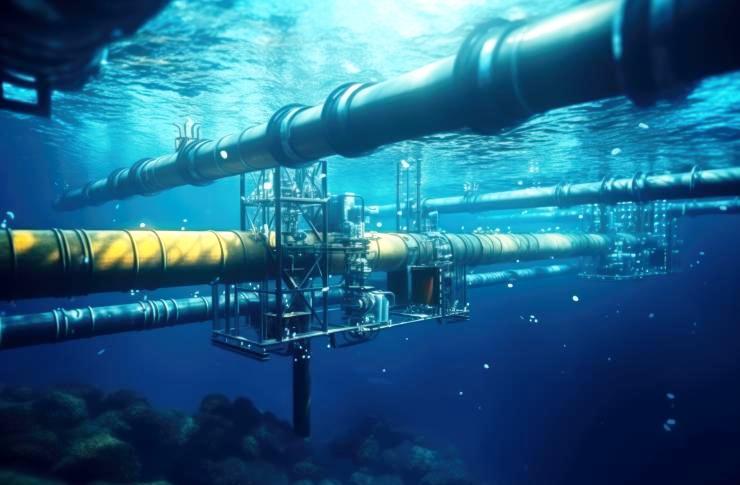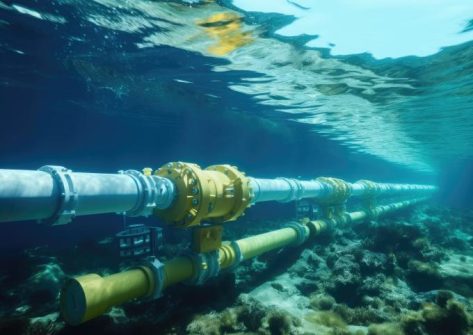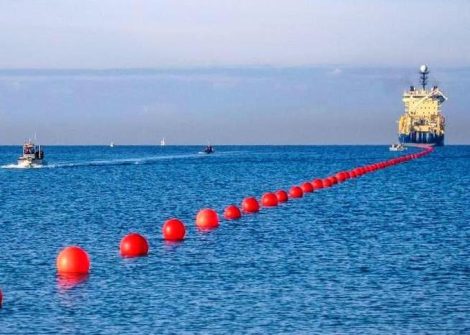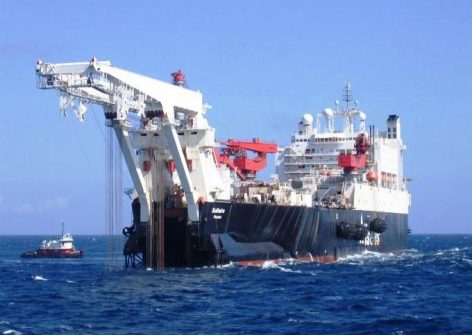Underwater Environment. The New El Dorado.

The vast riches of the seabed. Crucial role in communications. Technological innovations. Gas pipeline sabotage. The risks.
The sabotage episodes of the Nord Stream 1 and 2 gas pipelines last September 2022, together with those of the gas pipeline and the submarine telecommunications cable connecting Finland and Estonia which occurred in October 2023, give further confirmation that the underwater dimension is becoming the new field of coercive power together with those of land, sea, air, cyberspace, and the extra-terrestrial environment.
Acceleration in the last twenty years in the technological field has, in fact, facilitated access to this dimension, the use of which was previously extremely limited. To date, although only 20 percent of the total has been explored, it acquires its own specificity such as to constitute the so-called ‘underwater environment’. This is the portion of water that extends from the surface of the seas and oceans (but also lakes and rivers) to the depths and the seabed itself.
A surface divided between abyssal seabed, up to 6,000 meters deep, and the continental shelf which can extend for hundreds of kilometres from the coast, with a depth of around 200 metres. The complex architecture of this environment is also enriched by the presence of valleys and underwater mountains, volcanoes, and tectonic faults in constant movement, as well as by the important riches contained in its seabed which reveal themselves, day after day, increasingly useful for the development of contemporary civilization characterized by the high use of technological components.

Oil pipeline underwater. 123rf
On closer inspection, in fact, in addition to natural gas and oil, the seabed is rich in rare earths, copper, cobalt, nickel, as well as freshwater springs, recently discovered in the depths of the Atlantic Ocean, and hydrothermal springs whose Sulphide deposits contain industrially-sought-after metals such as silver, gold, copper, manganese, cobalt and zinc. In the seabed there are also resources whose commercial potential is considerable but about which little is known, or whose cumulative quantities are not sufficient to economically justify their extraction. The main resource of this type is that of methane hydrates, reserves of natural gas trapped at the bottom in ice-like forms.
Furthermore, the surface of the seabed hosts infrastructures of crucial strategic value which the Leonardo Foundation report, ‘Civilisation of the Sea’, the new underwater environment of humanity’ published in Italy, has divided into the following six macro categories: 1) mining infrastructure; 2) bio-farming infrastructure, in which agricultural crops are grown in a controlled atmosphere; 3) infrastructure for carbon dioxide storage; 4) infrastructure for the transport of electricity; 5) energy infrastructure; 6) communication infrastructure. Within the latter, in particular, through a network of 552 submarine cables spread over an area of 1.4 million km, 99% of global data traffic travels, compared by the authors of the Leonardo report to the nerve system in which there flows the current economic and social life of the planet. Given the crucial role that communications play today, it is clear that the interruption of one of them would cause a partial blockage of this flow, with the resulting economic damage.

A submarine communications cable under construction. 123rf
The infrastructure present in the underwater environment is, in fact, exposed to various types of dangers, whether natural, accidental, or intentional. As regards the risk of a natural or accidental nature, they are mostly attributable to the difficulties deriving from this environment, such as atmospheric pressure and the dangers deriving from marine fauna, but also to accidents that can occur in possible impacts with anchors, fishing nets and other manufactured goods. With regard to risks of an intentional nature, we include both sabotage, as occurred in the cases mentioned above, and techniques for intercepting cable communications. Furthermore, not being able to define with certainty the limit of jurisdiction of a State over a specific stretch of maritime territory, or the fact that the routes crossed by cables and ducts go beyond simple state sovereignty, increases the risk level and makes it more difficult to attribute responsibility. This level of risk could further intensify with the increase in technological development considering that unmanned systems are capable of overcoming the unavoidable limits that human activity encounters underwater. Their ease of use, together with their cost-effectiveness, leads us to predict an increasingly massive use which could result in both an increase in threats and enormous opportunities for exploitation and exploration of the seabed.
Therefore, it is now clear that in the coming years, the seabed will be increasingly crowded by underwater systems of all kinds, unmanned or with crews on board, as demonstrated by the new trend in the nautical sector to equip yachts with submarines.
The wealth of resources present on the seabed, together with the ease of access determined by technological innovation, constitutes an extraordinary source of opportunities, but also a new meeting ground and international competition between different ambitions and interests, as demonstrated by the increase in the phenomenon of the territorialization of the seas, through the proclamation of EEZs.

The Solitaire, is one of the largest pipe-laying ships in the world. CC BY-SA 3.0/PR Allseas
Furthermore, it should be added that although UNCLOS has established a regulatory structure for the oceans and the underwater world, it has not, however, proven sufficient to deal with the new and growing threats that arise in the underwater environment.
In particular, with regard to the resources located on the high seas, in that area which UNCLOS defines as the Area, it has been established that these resources are the common heritage of humanity and as such management has been entrusted to the International Seabed Authority (ISA) whose function is to administer them, as well as ensure the protection of the marine environment.
It is worth remembering that 168 nations and the European Union have signed up to UNCLOS today, including China and all the countries bordering the South China Sea which, together with the Arctic, constitute the two large areas in which the major challenges for resource exploitation exist. The USA, however, is not a party to it, as it refuses to accept the provisions on the exploitation of the seabed, while it accepts and acts in accordance with the other provisions of the Convention as they reflect the customary international law of the sea. According to some analysts, ratification would mean for the United States to cede sovereignty to the ISA and, therefore, preclude the possibility of digging freely in the high seas to exploit the huge mineral resources present in the ocean floors. It is therefore clear that, if underwater spaces were not regulated in time, the ease of access to the underwater environment, in an increasingly conflictual geopolitical context, would increase the intensification of acts of sabotage with considerable economic effects, as well as the free exploitation of resources with a strong environmental impact. (Open Photo: Underwater pipeline for gas transport.123rf)
Filippo Romeo



